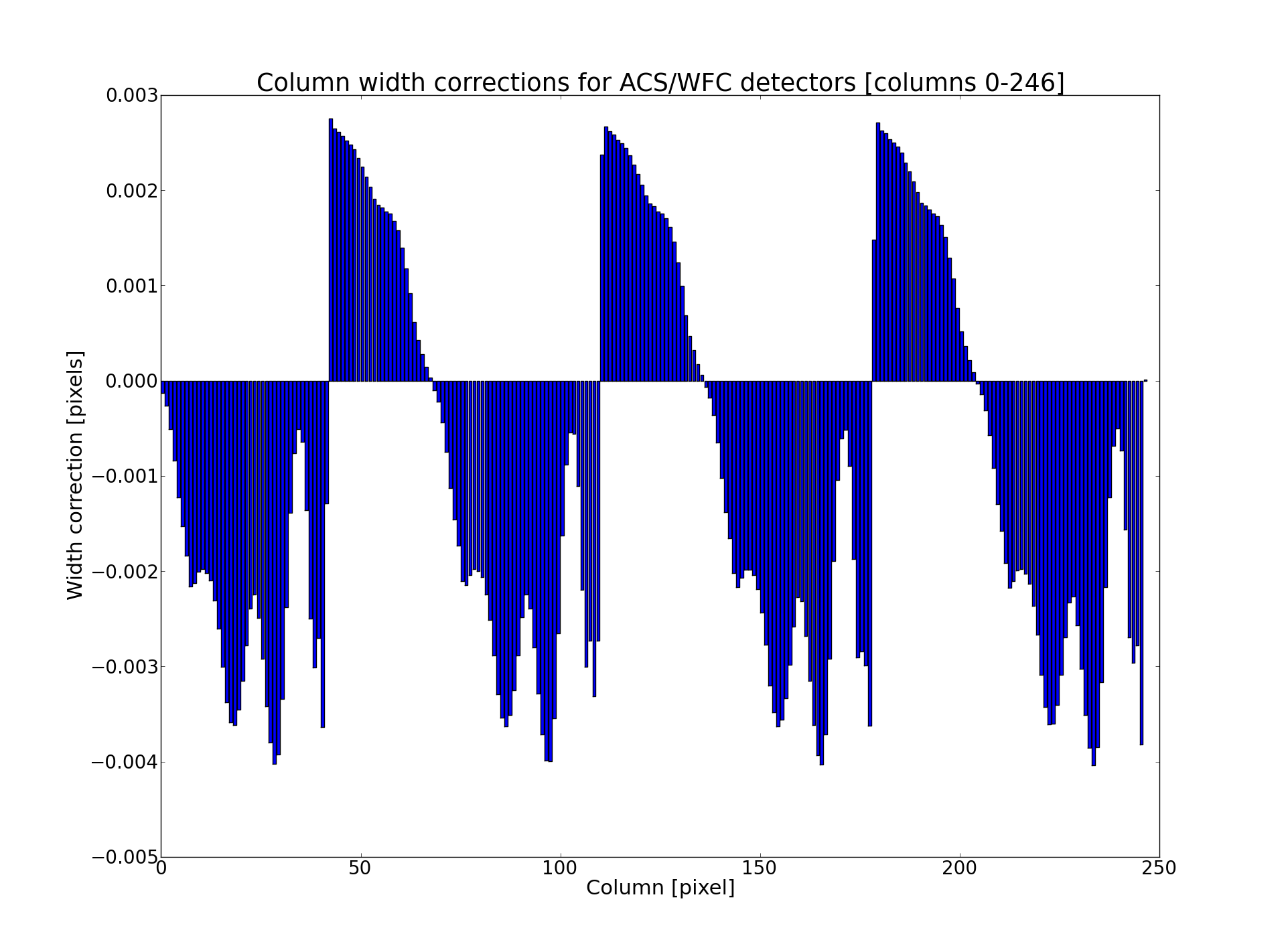Detector To Image Correction
The last element of the distortion which remains to be described is the fixed column (or row) width correction. This needs to be applied as a correction to the input pixel position and the output of this correction is to be used as input to the polynomial and non-polynomial distortion corrections.
The adopted implementation is based on the FITS Distortion Paper lookup table convention. It is assumed that the detector to image correction is the same for all chips but it can be extended to arbitrary number of chips and extensions if necessary.
For ACS the correction is stored as an image extension with one row. Each element in the row specifies the correction in pixels for every pixel in the column (or row) in the science extension as predetermined by the calibration teams who would be responsible for creating the reference files. For ACS the correction is in the X direction and for WFPC2 - in the Y direction. The following new keywords are added to the header of each science extension of a science file:
'D2IMFILE' = "string - name of reference file to be used for creating the lookup table"
'AXISCORR' = "integer (1 or 2) - axis to which the det2im correction is applied"
'D2IMEXT' = "string - name of reference file which was last used to create the lookup table"
'D2IMERR' = (optional)" float - maximum value of the correction"
‘D2IMFILE’ is used by UPDATEWCS as a flag that a reference file with this correction exists and an extension should be created. UPDATEWCS records the name of the reference file used for the lookup table extension to a keyword D2IMEXT in the primary header. It also populates keyword ‘AXISCORR’ based on whether this is a row or column correction. The lookup table extension has an ‘EXTNAME’ value of ‘D2IMARR’.
‘AXISCORR’ is used as an indication of the axis to which the correction should be applied
(1 - ‘X’ Axis, 2- ‘Y’ axis). ‘D2IMEXT’ stores the name of the reference file used by
UPDATEWCS to create a D2IMARR extension. If ‘D2IMEXT’ is present in the ‘SCI’ extension
header and is different from the current value of D2IMFILe in the primary header, the
correction array in D2IMARR is updated. The optional keyword ‘D2IMERR’ allows a user to
ignore this correction without modifying other header keywords by passing a parameter to
the software. The HSTWCS class accepts a parameter ‘minerr’ which specifies the minimum
value a distortion correction must have in order to be applied. If ‘minerr’ is larger than
‘D2IMERR’ the correction is not applied.
Detector To Image Reference File
An entirely new reference file, the D2IMFILE reference table, serves as the source of this 1-D correction for each affected instrument. This reference file only contains a single array of offsets corresponding to the 1-D correction to be applied. Header keywords in the reference file specify which axis needs this correction. As a result, this new reference file remains small enough to easily be added to an input image without significant change in size. An initial D2IMFILE for ACS has been generated for testing with a sample header provided in Appendix 3 - D2IMFILE Example.

This figure illustrates the corrections included in the first 246 columns of the ACS/WFC F475W D2IMFILE.
The WCS for this correction describes the extension as a 1-D image, even though it gets
applied to a 2-D image. This keeps it clear that the same correction gets applied to
all rows(columns) without interpolation. The header specifies which axis this correction
applies to through the use of the AXISCORR keyword. The WCS keywords in the header of the
D2IMARR extension specifies the transformation between pixel coordinates and lookup table
position as if the lookup table were an image itself with 1-based positions (starting pixel
is at a position of (1,1)). The value at that lookup table position then gets used to correct
the original input pixel position.